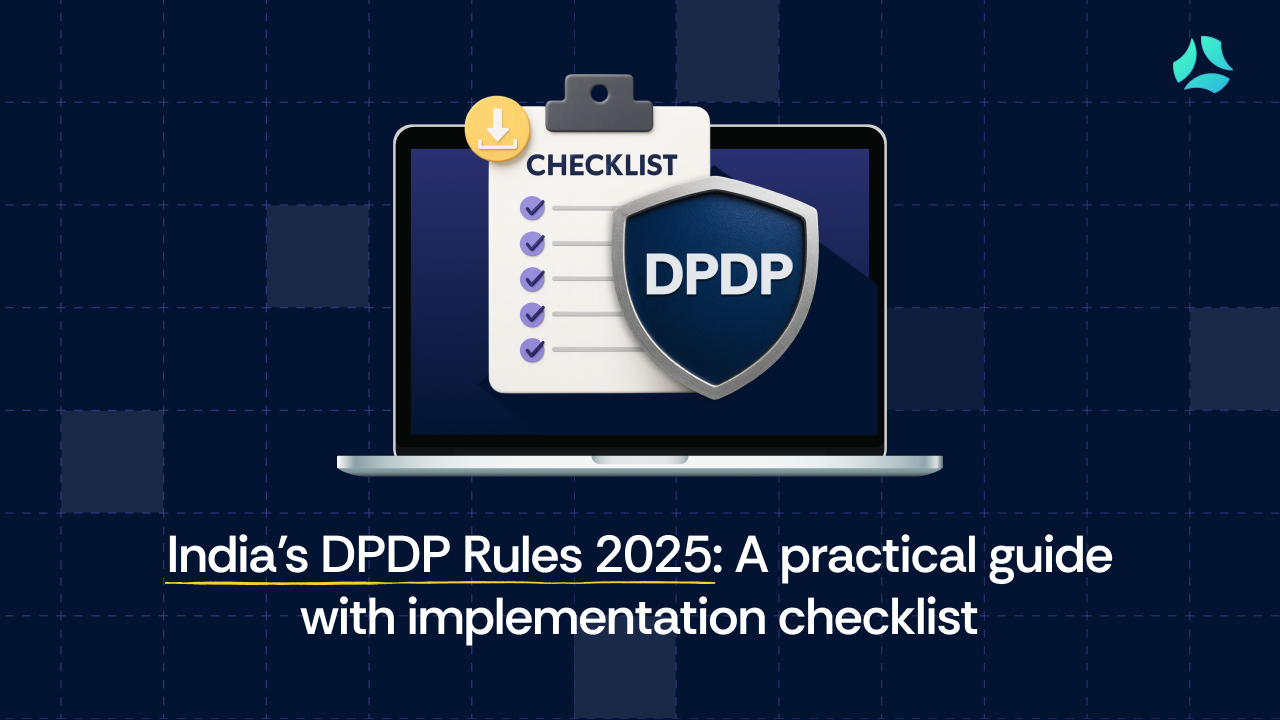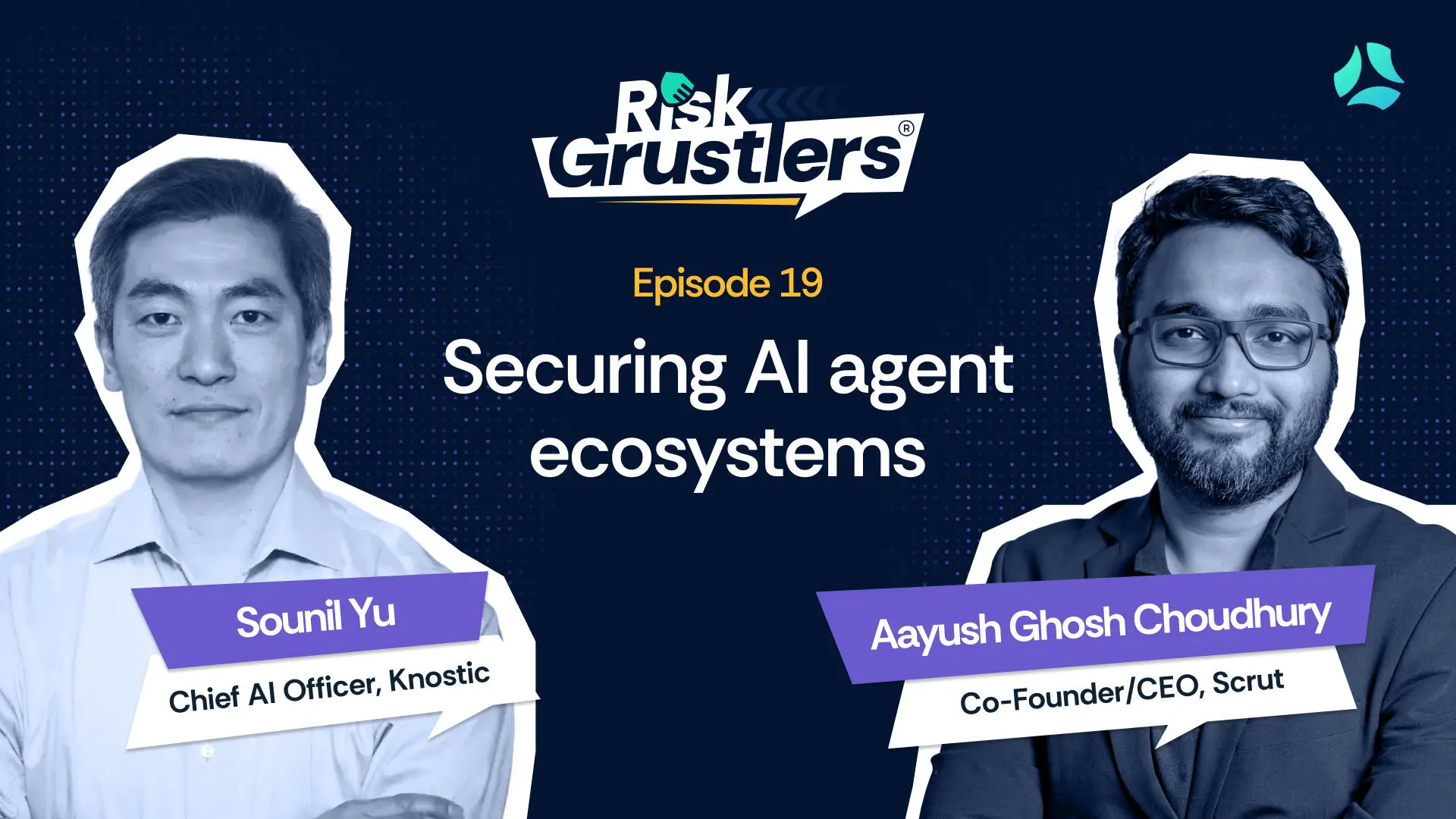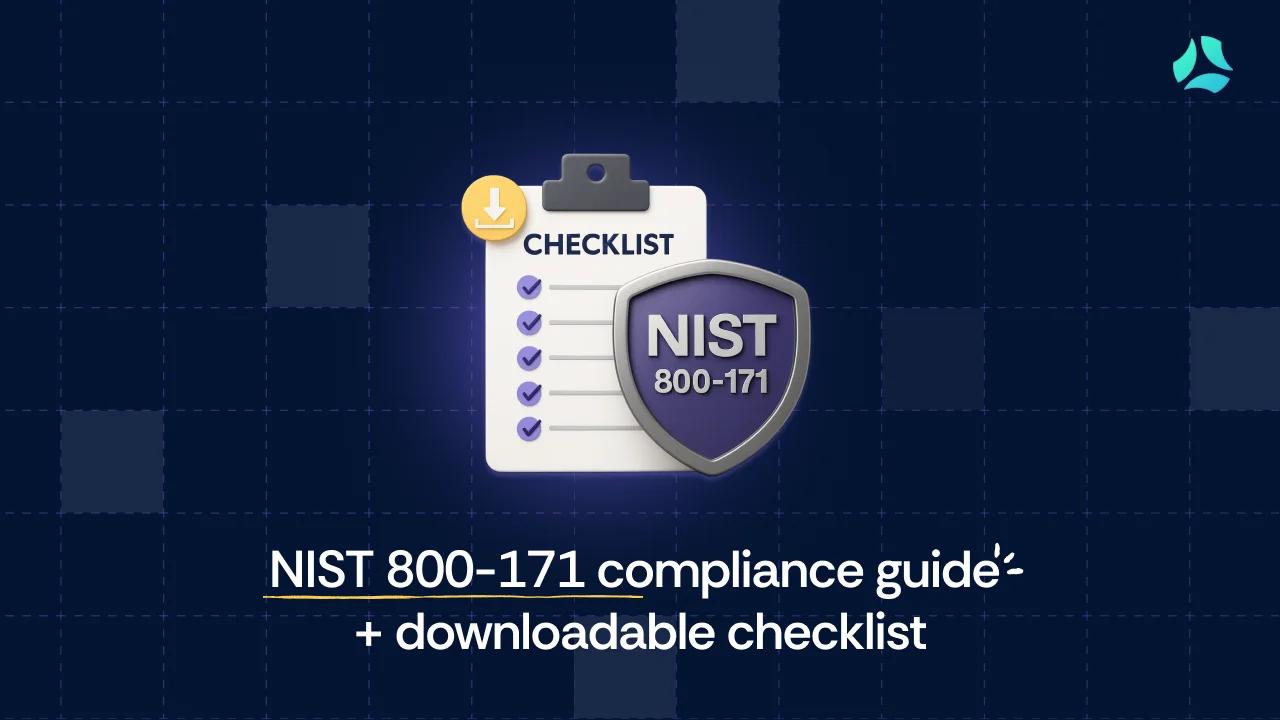Comprehensive IT Risk Management Framework Guide

Businesses face increasing risks—cyber threats, regulatory fines, and operational failures—that can disrupt operations and damage customer trust. Without a structured approach, risk management becomes reactive and ineffective.
A well-defined risk management framework (RMF) helps organizations proactively identify vulnerabilities, implement controls, and continuously monitor risks to minimize potential threats and disruptions. Choosing the right framework enhances decision-making and strengthens security.
This blog explores six leading RMFs, their benefits, and how to choose the best one for your organization.
What are Risk Management Frameworks?
A risk management framework is a structured approach that organizations use to identify, assess, and mitigate risks while ensuring compliance with industry standards. These frameworks help businesses establish a systematic way to manage security, operational, financial, and regulatory risks. Popular RMFs include NIST RMF, COSO ERM, COBIT, ISO 31000, FAIR, and OCTAVE.
Why are risk management frameworks important?
Risk is an inevitable part of any business, but proactively managing it can help organizations avoid financial losses, reputational damage, and compliance failures.
Implementing an RMF provides the following benefits:
1. Ensures regulatory compliance: Organizations can adhere to industry standards such as SOC 2, ISO 27001, HIPAA, and GDPR, reducing the risk of legal penalties.
2. Supports informed decision-making: A structured RMF helps leadership make risk-based decisions that align with business objectives.
3. Improves operational efficiency: Risk management processes become more streamlined, eliminating redundancies and enhancing productivity.
4. Enhances security measures: An RMF strengthens defenses against cyber threats, fraud, and data breaches, reducing vulnerabilities.
5. Builds trust and reputation: Demonstrating compliance and strong security practices fosters customer confidence and industry credibility.
6. Promotes financial stability: Organizations can mitigate financial losses associated with cyberattacks, fraud, and legal disputes.
7. Strengthens resilience and business continuity: A well-implemented RMF ensures organizations can withstand crises and recover quickly from disruptions.
How to choose the right risk management framework?
Selecting the right risk management framework is essential for ensuring security, compliance, and operational resilience. The best framework for your organization depends on industry requirements, regulatory obligations, risk exposure, and business objectives.
Choosing the right risk management framework is essential for ensuring security, compliance, and long-term resilience. Consider these key factors when making your selection:
1. Industry-specific requirements – Some sectors mandate specific frameworks, such as COSO ERM for finance and ISO 27001 or NIST for healthcare and cybersecurity.
2. Regulatory compliance – Ensures alignment with laws like GDPR, HIPAA, SOC 2, and PCI DSS to avoid legal and reputational risks.
3. Risk profile and business goals – High-risk industries may prioritize NIST CSF, while broader concerns may be better addressed by ISO 31000 or COSO ERM.
4. Scalability and flexibility – A framework should evolve with business growth and adapt to emerging threats (e.g., NIST CSF and ISO 27001 allow customization).
5. Integration with existing systems – The framework should seamlessly align with security policies, governance structures, and risk management tools.
6. Implementation complexity – Consider the effort required for deployment and ongoing maintenance.
7. Comprehensive risk coverage – Must address financial, operational, cybersecurity, and compliance risks.
8. Clear governance and accountability – Defines roles, responsibilities, and escalation processes for effective risk management.
9. Continuous monitoring and improvement – Includes risk assessments, audits, and updates to enhance security over time.
10. Alignment with business strategy – Supports decision-making and business continuity beyond just meeting compliance requirements.
Selecting the right framework helps organizations proactively manage risks while supporting long-term security, compliance, and business growth.
Organizations often combine or integrate multiple frameworks to create a more comprehensive risk strategy.
For example:
✔ ISO 31000 + NIST RMF → Combines general risk management principles with security controls.
✔ COBIT + COSO ERM → Aligns IT governance with enterprise risk management.
Managing risk manually is time-consuming and prone to human error. Automation tools, like Scrut, enhance efficiency by streamlining compliance.

6 popular IT risk management frameworks
Each risk management framework serves specific industries and organizational needs. Selecting the right framework depends on your organization's risk terrain, industry requirements, and compliance obligations.
1. NIST Risk Management Framework (RMF)
The NIST Risk Management Framework (RMF) is a structured process developed by the National Institute of Standards and Technology (NIST) for managing cybersecurity risks in information systems. Primarily detailed in the NIST Special Publication (SP) 800-37, it aligns with the Federal Information Security Management Act (FISMA), which mandates that federal agencies establish information security programs.
The NIST RMF integrates security, privacy, and risk management into the system development lifecycle (SDLC) and provides a structured approach to identifying, assessing, and mitigating risks. It is designed to help organizations ensure compliance with security requirements and protect sensitive information.
While it is mandatory for U.S. federal agencies and contractors, many private-sector organizations also adopt it as a best practice to enhance their cybersecurity posture and regulatory compliance. For U.S. federal agencies and contractors, non-compliance with the NIST RMF can lead to increased audit scrutiny, loss of federal contracts, reduced funding, and heightened regulatory oversight under FISMA.
The NIST Risk Management Framework (RMF) originally had six steps, but it was updated in NIST Special Publication (SP) 800-37 Revision 2 to include a seventh step for enhanced integration of privacy and supply chain risk management. These include:
- Prepare – Establish the organization's risk management strategy and readiness for implementing RMF. (Added in Rev. 2)
- Categorize – Identify and categorize information systems based on risk and impact levels.
- Select – Choose appropriate security controls from NIST SP 800-53.
- Implement – Apply and integrate security controls into the system.
- Assess – Evaluate the effectiveness of implemented controls.
- Authorize – Obtain formal approval to operate the system.
- Monitor – Continuously track security controls and risks over time.
Best for:
- U.S. federal agencies
- Defense contractors
- Highly regulated industries
Key features:
- Provides a structured, lifecycle-based approach to risk management.
- Focuses on security control selection, implementation, assessment, and continuous monitoring.
- Aligns with FISMA (Federal Information Security Management Act)
Benefits:
- Ensures regulatory compliance for federal agencies.
- Enhances security posture through continuous monitoring.
- Provides clear risk assessment guidelines.
2. COSO ERM (Enterprise Risk Management)
COSO ERM, developed by the Committee of Sponsoring Organizations of the Treadway Commission (COSO), provides a structured approach to enterprise risk management (ERM). First introduced in 2004, and significantly updated in 2017, it helps organizations identify, assess, and manage risks affecting business strategy and performance.
It integrates risk management with governance and internal controls, promoting a proactive approach to risk oversight. Unlike rigid regulatory frameworks, COSO ERM is adaptable across industries and emphasizes a strong risk culture, transparency, and continuous improvement.
While not mandatory, it is widely adopted by regulated industries and large enterprises to strengthen governance, align risk appetite with strategy, and enhance resilience.
Best for:
- Large corporations and multinational enterprises
- Financial institutions and organizations with complex risk exposure
- Businesses looking to integrate risk management with corporate strategy
Key features:
- Comprehensive risk management approach that aligns with business goals and governance structures.
- Principle-based framework that can be tailored to different industries and risk environments.
- Focus on corporate governance and accountability, ensuring transparency in risk oversight.
- Emphasizes a strong risk culture by integrating risk awareness at all organizational levels.
Benefits:
- Strengthens corporate governance and risk oversight.
- Aligns risk appetite with strategic business objectives.
- Enhances regulatory compliance and financial reporting.
- Improves organizational resilience against evolving risks.
3. COBIT 2019 (Control Objectives for Information and Related Technologies)
COBIT is a globally recognized framework for IT governance and management. ISACA developed it to help organizations align IT with business objectives while effectively managing risks. The latest version, COBIT 2019, emphasizes enterprise governance of information and technology (EGIT), which expands beyond traditional IT governance.
COBIT 2019 organizes governance and management objectives into five domains: Evaluate, Direct, and Monitor (EDM); Align, Plan, and Organize (APO); Build, Acquire, and Implement (BAI); Deliver, Service, and Support (DSS); and Monitor, Evaluate, and Assess (MEA).
Best for: Enterprises seeking IT governance, risk management, and regulatory compliance
Key features:
- Establishes a structured approach to IT risk management and governance.
- Ensures IT processes align with business objectives and regulatory standards.
- Utilizes a principle-based governance system.
Benefits:
- Strengthens IT governance and accountability.
- Supports audits, enhances risk management, risk reporting, and regulatory compliance.
- Improves IT performance and business alignment.
4. ISO 31000
ISO 31000, first published in 2009 and updated in 2018, provides a principle-based approach to risk management that integrates with governance, strategy, and decision-making. Unlike prescriptive frameworks, it emphasizes value creation, proactive risk management, and continuous improvement.
Although it is a voluntary standard, ISO 31000 is widely adopted by organizations across industries to enhance risk management and regulatory alignment. It applies to businesses, government agencies, and nonprofits worldwide. While non-compliance carries no legal penalties, poor risk management can result in financial losses and reputational damage.
The framework consists of three key components: Principles (integration and continuous improvement), Framework (leadership commitment and governance), and Process (risk identification, assessment, treatment, and monitoring).
Best for:
- Businesses across various industries, including finance, healthcare, and manufacturing
- Organizations seeking a standardized, flexible approach to risk management
Key features:
- A principle-based framework that integrates risk management into business processes.
- Covers risk identification, evaluation, treatment, and review at all organizational levels.
- Encourages a risk-aware culture through continuous improvement.
Benefits:
- Provides a flexible and scalable risk management approach.
- Enhances decision-making by aligning risk management with business objectives.
- Improves stakeholder confidence through structured risk governance.
- Reduces financial and operational risks by promoting a proactive risk culture.
5. FAIR (Factor Analysis of Information Risk)
FAIR (Factor Analysis of Information Risk) is a quantitative risk management framework designed to help organizations identify, analyze, and prioritize IT and cybersecurity risks based on financial impact. Unlike traditional qualitative risk assessments, FAIR enables data-driven decision-making by measuring risk in monetary terms, allowing organizations to allocate security resources more effectively.
FAIR is not mandatory. It is a voluntary risk management framework that organizations adopt to enhance their cyber risk quantification and decision-making. However, it is recognized by NIST (as part of NIST 800-53 and NIST CSF) and is often used by organizations in regulated industries to support compliance efforts. As it is not legally required, so there are no direct penalties.
FAIR is used globally, especially in the U.S., Europe, and regions prioritizing risk-based cybersecurity.
Best for:
- Financial services, healthcare, government, critical infrastructure, insurance, and technology sectors, where risk quantification supports compliance and decision-making.
- Large and mid-sized organizations, while small businesses may adopt it selectively due to resource requirements.
Key features:
- Measures risk in financial terms instead of subjective ratings
- Prioritizes security investments based on financial impact
- Complements NIST RMF, ISO 27005, and CIS Controls
- Provides a structured approach to comparing cybersecurity risks
- Bridges security risks with business objectives for better executive communication
6. OCTAVE (Operationally Critical Threat, Asset, and Vulnerability Evaluation)
The OCTAVE framework was initially developed in 1999 for the U.S. Department of Defense but has since evolved into a widely used model for managing information security risks.
OCTAVE emphasizes a business-driven approach to cybersecurity, helping organizations identify critical assets, assess vulnerabilities, and evaluate potential threats to determine their impact on operations.
OCTAVE provides a structured, practical framework for organizations looking to enhance their security resilience and integrate risk management into their overall business strategy.
Best for:
- Organizations seeking a structured and actionable risk assessment methodology.
- Businesses with complex IT environments requiring in-depth threat analysis.
- Enterprises aiming to align cybersecurity strategies with business objectives.
Key features:
- Asset-centric approach: Focuses on identifying and prioritizing critical IT assets.
- Threat and vulnerability assessment: Evaluates internal and external threats along with security weaknesses.
- Business impact analysis: Assesses the potential consequences of security incidents.
- Three-phase process–identify IT assets and associated threats, analyze vulnerabilities through security assessments (e.g., penetration testing, audits, access reviews), and develop a risk management strategy tailored to the organization's needs.
Benefits:
- Helps organizations systematically assess and mitigate security threats.
- Enables businesses to create a customized risk management plan based on actual threats.
- Strengthens incident prevention and response through proactive risk assessments.
How to implement a risk management framework
Once you've chosen the right framework, follow these steps for effective implementation:
Step 1: Assess current risk posture
Identify existing risks, vulnerabilities, and gaps in compliance.
Step 2: Select the appropriate framework
Choose one that aligns with your business needs and regulations.
Step 3: Define roles and responsibilities
Assign accountability to risk managers, compliance officers, and IT teams.
Step 4: Develop risk policies and procedures
Establish policies for risk assessment, mitigation, and monitoring.
Step 5: Implement controls and measures
Apply security, operational, and compliance controls based on the framework.
Step 6: Monitor and review risks continuously
Conduct regular audits, reassess risks, and update policies accordingly.
Automate IT Risk Management Frameworks with Scrut
Automating IT risk management enhances security, ensures compliance, and reduces manual effort. Scrut simplifies this by integrating frameworks like SOC 2, ISO 27001, and NIST CSF into a single, automated platform. It streamlines risk assessments, compliance tracking, and control monitoring while leveraging AI to identify vulnerabilities and prioritize risks.
With seamless integration into SIEM (Security Information and Event Management), cloud security, and third-party risk tools, Scrut enables continuous threat detection and response. Automated evidence collection, policy enforcement, and reporting keep organizations audit-ready.

Frequently Asked Questions
What is the purpose of an IT risk management framework?
An IT risk management framework provides a structured approach to identifying, assessing, managing, and mitigating risks in information technology. It helps organizations protect their infrastructure, maintain regulatory compliance, and ensure business continuity.
What are the key components of an IT risk management framework?
IT risk management frameworks typically include risk identification, assessment, mitigation, monitoring, and regulatory compliance. These components work together to manage IT-related risks effectively.
What is an example of a widely used IT risk management framework?
One widely used IT risk management framework is the NIST Risk Management Framework (NIST RMF). Developed by the National Institute of Standards and Technology, NIST RMF provides a comprehensive, lifecycle-based process for managing cybersecurity risks, including steps such as Prepare, Categorize, Select, Implement, Assess, Authorize, and Monitor.
How does an IT risk management framework support compliance?
An IT risk management framework helps organizations stay compliant with industry regulations by integrating tools and processes that align with legal and regulatory requirements. It ensures adherence to evolving standards, reducing the risk of penalties.


















